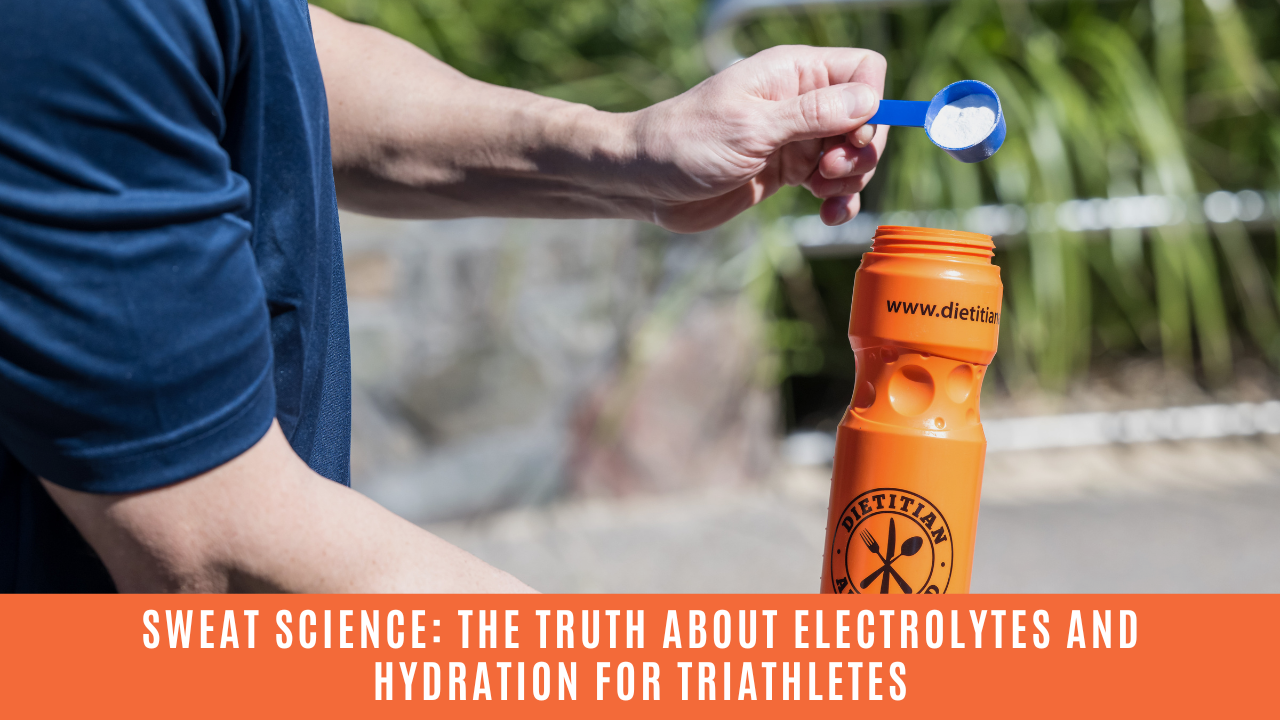Sweat Science: The Truth About Electrolytes and Hydration for Triathletes

Are electrolyte drinks helping your training or just making expensive pee?
If you're a triathlete, you've seen the pastel-coloured powders and slick marketing promising better hydration, more energy and faster recovery. But here's the truth: most of it is hype. For endurance athletes, hydration is critical, but the way we use electrolytes needs to be strategic.
In this blog, we’ll unpack:
-
Why triathletes actually need electrolytes
-
The dangers of drinking too much plain water
-
What to look for in a quality electrolyte product
-
How to create a personalised hydration plan
Not everyone needs electrolyte drinks every day
From skin patches to chews and brightly branded sachets, electrolytes are marketed as essential. But unless you're training long, sweating heavily or racing in heat, plain water (plus food) is usually enough.
Key point: Just because a drink says "electrolyte" doesn't mean it's helpful for triathletes. Many are low in sodium and packed with fairy-dust ingredients that do little more than look good on a label.
When do electrolytes really matter?
Electrolytes come into play when:
-
Your session is over 90 minutes
-
You're training in hot or humid conditions
-
You’re a heavy or salty sweater
-
You’re racing long-course (70.3 or full distance)
Sodium is the key electrolyte we lose in sweat. While we also lose small amounts of potassium, magnesium and calcium, sodium loss is the most important to replace.
Why your hydration needs are unique
Every athlete sweats differently. Sweat rate and sodium loss can vary dramatically. Some triathletes lose 200mg sodium per litre of sweat, others over 2000mg. That’s a tenfold difference!
Factors influencing sweat rate include:
-
Genetics
-
Fitness level and acclimatisation
-
Body size
-
Training environment (indoor vs outdoor, season, humidity)
Inside the Triathlon Nutrition Academy, athletes learn to measure their sweat rate and sodium concentration and use that data to fine-tune their hydration plan.
"One of my athletes, Chris, kept DNFing races. He thought it was a fuelling issue, but after testing, we discovered he was losing huge amounts of sodium. Once we adjusted his plan, he stopped cramping and started finishing strong."
The real danger: hyponatremia
Hyponatremia happens when sodium levels drop too low, often from over-drinking plain water. It’s not just uncomfortable — it can be life-threatening.
Warning signs include:
-
Nausea
-
Bloating
-
Foggy thinking
-
Confusion or collapse in severe cases
“Drink to thirst” isn't always the answer. Your goal should be to replace what you're losing in a way that suits your training load and sweat profile.
How to choose the right electrolyte product
With so many options — tablets, powders, capsules, chews — it’s easy to get overwhelmed. Here’s what matters:
1. Check sodium content
-
This is the most important ingredient
-
If it doesn’t list sodium clearly, skip it
2. Consider carbs
-
Do you need extra fuel or just hydration?
-
Pick based on the session
3. Choose the right format
-
Drinks, capsules, tablets — find what works for your gut
4. Avoid "fairy dust" blends
-
If it lists 10+ minerals in trace amounts, it’s more marketing than science
5. Make sure it tastes good
-
If it’s too salty or artificial, you won’t drink enough
Final thoughts: electrolytes are a tool, not a magic bullet
Used well, electrolyte drinks can help you train harder, recover faster and race stronger. But misused, they’re either doing nothing or worse — putting your health at risk.
Next steps
Ready to dial in your hydration strategy?
-
Download the Triathlon Nutrition Checklist to see where you're at
-
Want help calculating your sweat rate and sodium loss? Join the Triathlon Nutrition Academy and build a personalised hydration plan
Hydrate smart. Skip the fairy dust. Train like a pro.


